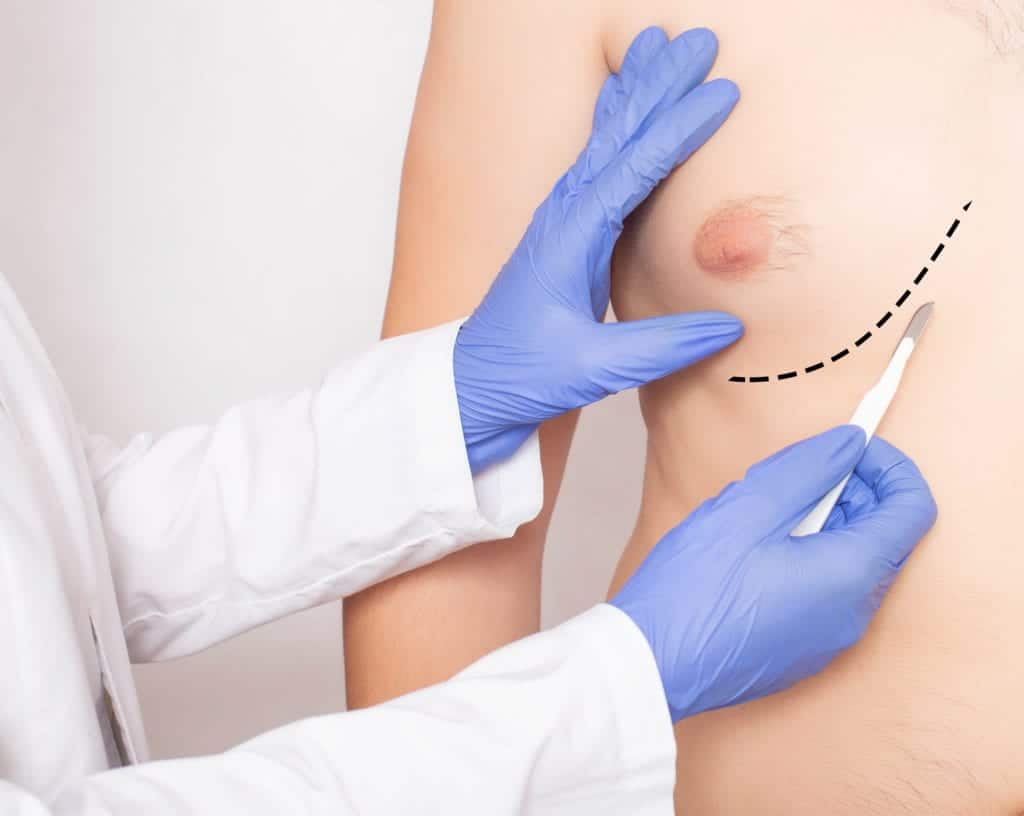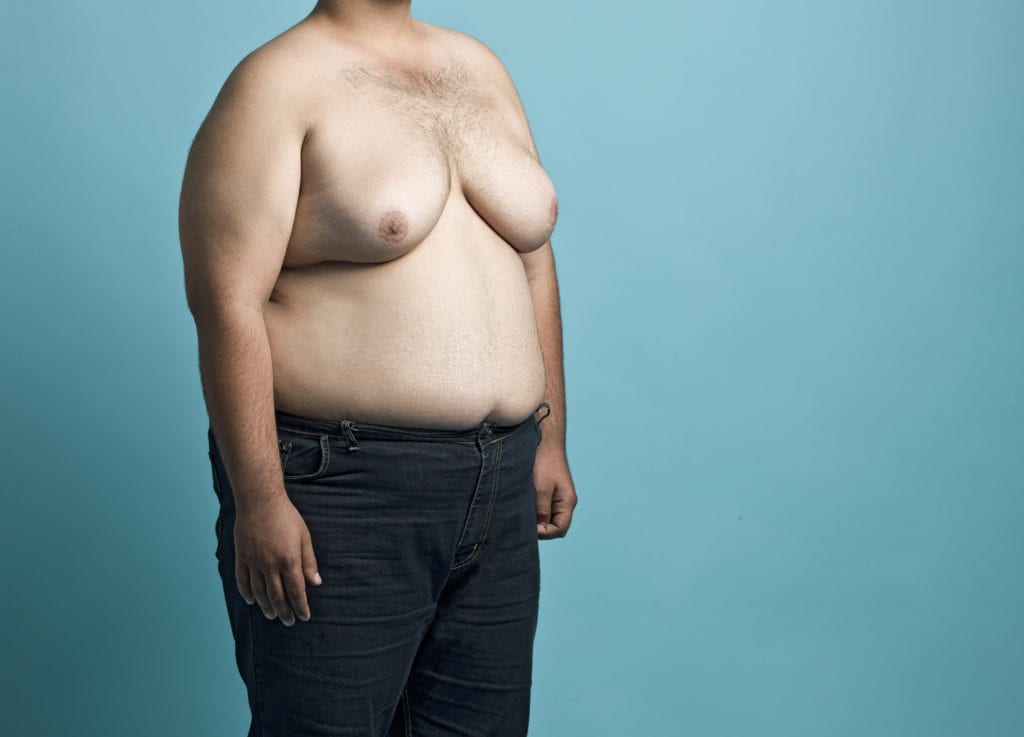Having “man boobs” is not rare. Unfortunately, most men are confused about what it really is all about, so they don’t do anything about it. But enlarged male breasts, a condition known as gynecomastia, deserves more respect and education. This isn’t a handful of people, either — 40 to 60 percent of men are affected by gynecomastia — and it can really impact a man’s self-esteem.
Dr. Wiener performs male breast reduction to correct the breast enlargement.

What is gynecomastia?
Gynecomastia, a word of Greek origin meaning “woman-like breasts,” can affect one or both breasts. It’s surprising, but it’s believed that around half of all men suffer from gynecomastia, having enlarged breasts. Most of those men never do anything about it or even suspect it of being a “condition.” Gynecomastia is common and well understood in teenage boys but is somewhat of a mystery in adult men.
What causes gynecomastia?
Three-quarters of all teenage boys have gynecomastia to some degree. It’s a direct result of puberty, where estrogen and testosterone levels can be off the charts, leading to enlarged breasts, along with acne and other teenage issues. Luckily for teenagers, once puberty ends so does their gynecomastia in the vast majority of cases.
In adults, breast enlargement usually arises in middle-aged and older men. This is a time of shifting hormones, too, and that is thought to play a role. It is also believed that certain medications have links to gynecomastia: steroids, antibiotics, anti-anxiety drugs, heartburn treatment drugs, tricyclic antidepressants, and AIDS treatment drugs. Steroids, in particular, are linked to enlarged breast development in men due to their hormonal makeup. Heavy drinking and marijuana use are also thought to be triggers.
How can Dr. Wiener treat gynecomastia? How is surgery performed?
Often the first course of treatment is for Dr. Wiener to prescribe medication that reduces the amount of estrogen the patient’s body is producing. This may reverse the hormone imbalance and reduce the breasts.
If the patient’s enlarged breasts are mainly the result of fatty tissue, Dr. Wiener may be able to perform limited liposuction to remove this tissue, but if the patient has the rubbery mass of true gynecomastia liposuction won’t be sufficient.
In these cases, surgery is necessary. To avoid obvious scarring, Dr. Wiener usually will make incisions either in the armpits or around the areolae. He will then remove the glandular tissue, along with excess skin and fat. Liposuction may be included if the patient has an abundance of fat in the breasts in addition to the glandular tissue. The procedure usually lasts around one hour.
Who is a candidate for male breast reduction surgery?
The question of whether surgery can fix a patient’s condition involves ruling some things out. If a man’s enlarged breasts are due to weight gain, the first step is to lose the weight and see if the condition persists. Heavy drinkers and marijuana users also aren’t candidates for surgery, as their breast enlargement comes from their lifestyle choices.
Dr. Wiener can diagnose when gynecomastia is to blame. He’ll feel for a firm, rubbery mass underneath the nipple area. The size of this mass is usually less than two inches in diameter. It will often be sensitive to applied pressure.

As mentioned above, before opting for surgery, Dr. Wiener will likely begin treatment by prescribing medication that reduces the amount of estrogen the patient’s body is producing.
Is male breast reduction a permanent solution for gynecomastia?
Patients wonder if this surgery will need repeating later on. True gynecomastia, versus enlarged breasts due to weight gain or other lifestyle factors, is caused mainly by excess glandular tissue. This causes the protrusion of the nipple-areola complex. In male breast reduction surgery, Dr. Wiener removes the majority of the mammary gland, leaving enough to support the nipple-areola. With this tissue gone, the chances of recurrence are very low.
However, if the gynecomastia was due to the use of steroids, marijuana, or other medications, it is possible for a patient’s breasts to become enlarged again if usage is continued. Also, a sizeable increase in weight can allow fat to accumulate in the breasts, although this isn’t true gynecomastia.
If you want to maintain your new chest contours, keeping to a healthy weight, and moderating your alcohol or marijuana use will be necessary. Steroid use would fully need to cease, as enlarged breasts are a direct side effect.
What will my scarring be like after male breast reduction?
Because Dr. Wiener can usually make the incision around the patient’s areola or in the armpit, scarring is almost invisible. Scarring is not an issue with this surgery.
How will recovery be after male breast reduction surgery?
When Dr. Wiener performs surgery to correct gynecomastia, the recovery is not difficult. There will be some swelling and discomfort that may last up to two weeks (and can linger longer at times), but it will begin to resolve relatively quickly. You will need to wear a compression shirt or vest to reduce swelling and to help your chest conform to its new contour. You should be able to resume most of your normal activities within one week after surgery, but any exercise, such as weightlifting, that puts pressure on the chest will need to wait for up to six weeks. Dr. Wiener will discuss this with you during your follow-up appointments.
Schedule Your Consultation Today
If you’re interested in learning more about gynecomastia please contact us for a consultation at 773.763.3990 or fill out our contact us form. We will discuss your needs and concerns, and determine your best course of action.

